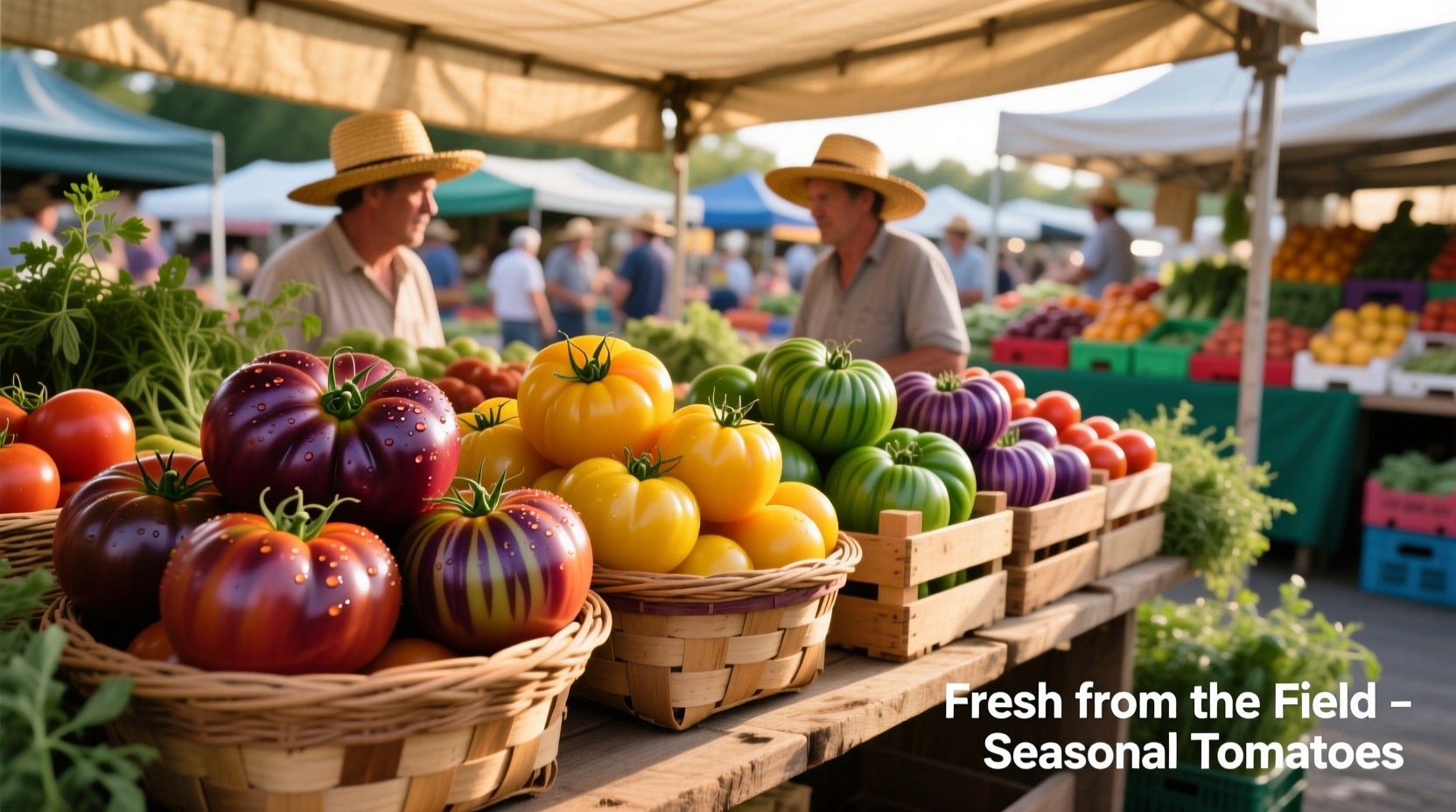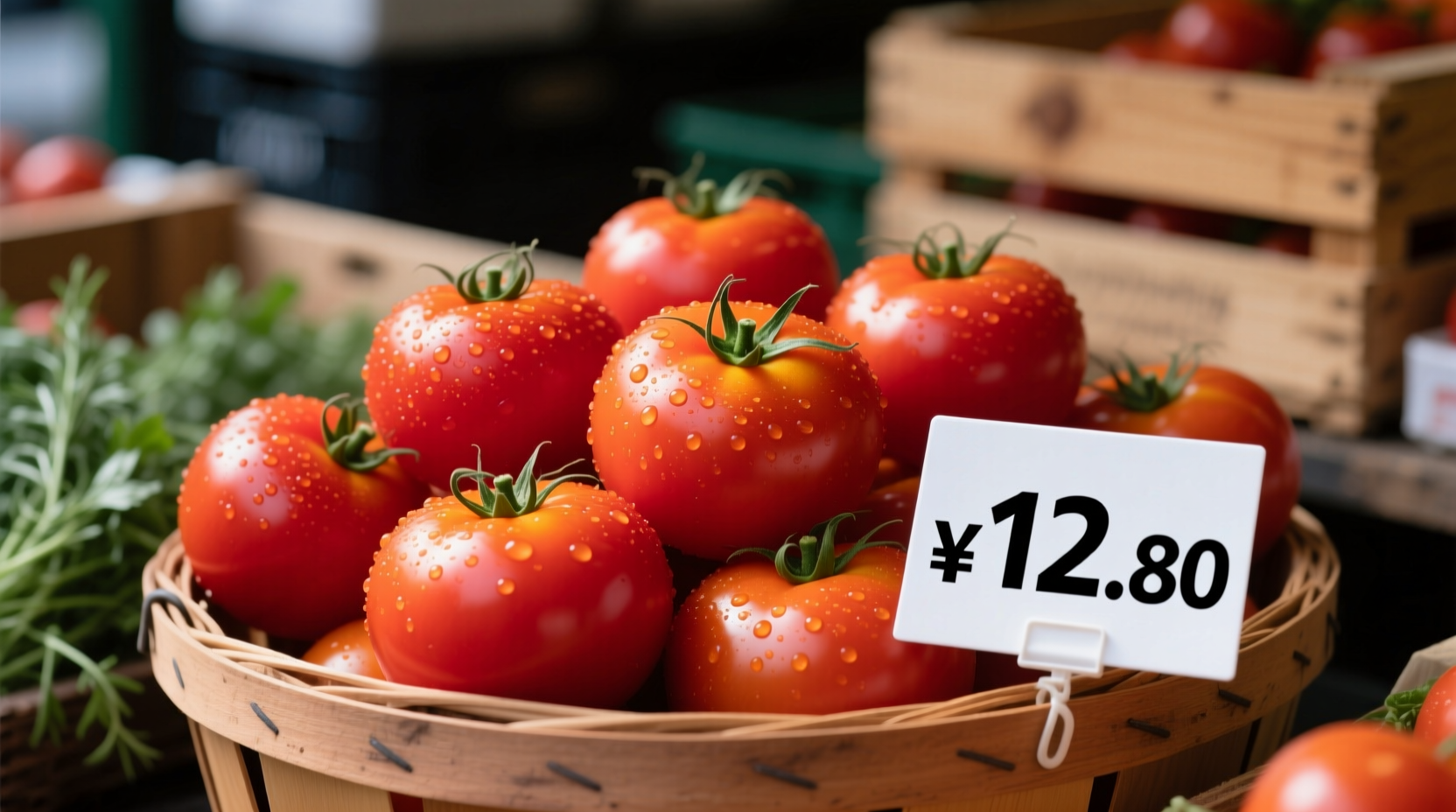Understanding Today's Tomato Pricing Landscape
Whether you're meal planning on a budget or managing a small food business, knowing exactly what tomato prices are today helps you make smarter purchasing decisions. This guide delivers current pricing data alongside practical insights to help you navigate seasonal fluctuations and regional differences.
Current Tomato Price Snapshot by Variety
Tomato prices vary significantly based on type and growing method. Here's the latest pricing data from USDA's Economic Research Service (June 2024):
| Tomato Variety | Average Retail Price | Seasonal Range | Best Value Months |
|---|---|---|---|
| Vine-ripened | $2.25/lb | $1.75-$3.25 | June-September |
| Roma/Plum | $1.85/lb | $1.40-$2.90 | July-October |
| Cherry/Grape | $4.75/pint | $3.50-$6.25 | May-August |
| Organic | $3.10/lb | $2.50-$4.50 | June-September |
Data source: USDA Economic Research Service, updated monthly with nationwide retail price tracking.
Seasonal Price Fluctuations: What to Expect Throughout the Year
Tomato prices follow predictable seasonal patterns driven by supply availability. Understanding these tomato price trends by season helps you time purchases for maximum value:
Winter (December-February)
Prices peak at 30-40% above annual average as northern hemisphere relies on greenhouse production and imports. Expect vine-ripened tomatoes around $2.80-$3.50/lb during these months.
Spring (March-May)
Gradual price decline begins as southern US and Mexican production increases. Prices drop approximately 15% from winter peaks by late spring.
Summer (June-August)
Peak harvest season brings lowest prices - typically 25-30% below annual average. Local farmers markets often offer prices 20% lower than grocery stores during summer months.
Fall (September-November)
Prices begin rising as outdoor production winds down. Late-season sales on surplus crops can provide temporary discounts in September and early October.
Regional Price Differences Across the United States
Your location significantly impacts current tomato prices near me. These regional variations stem from transportation costs, local production capacity, and regional demand patterns:
- West Coast: Generally 10-15% below national average due to California's year-round production. Average price: $1.70/lb for standard varieties.
- Midwest: Moderate pricing with significant summer discounts when local production peaks. Average price: $1.95/lb.
- Northeast: Typically 12-18% above national average due to transportation costs. Winter prices can be 25% higher than West Coast equivalents.
- South: Competitive pricing during summer months but higher winter prices due to reduced local production in colder months.
Key Factors Driving Tomato Price Changes
Several elements influence why tomato prices change throughout the year. Being aware of these factors helps anticipate price movements:
Weather Conditions
Extreme temperatures, droughts, or excessive rainfall directly impact crop yields. The 2023 Florida tomato crop saw 22% reduced output due to hurricane damage, causing temporary price spikes of 35% nationwide (source: USDA National Agricultural Statistics Service).
Production Costs
Fuel prices affect transportation costs, while labor shortages can increase harvesting expenses. Since 2020, production costs have risen 18% due to these factors, contributing to higher retail prices.
Import/Export Dynamics
The US imports approximately 35% of its winter tomatoes from Mexico. Trade policy changes or currency fluctuations impact these prices significantly. Recent border inspection protocols have added 5-7% to winter tomato costs.

Smart Shopping Strategies for Better Tomato Value
Knowing how to find the best tomato prices requires more than just checking current rates. Implement these practical approaches:
Timing Your Purchases
Buy tomatoes on Wednesdays and Thursdays when grocery stores typically restock and discount older produce. End-of-season sales in October often provide 20-30% discounts on remaining inventory.
Choosing the Right Variety
Roma tomatoes consistently offer the best value for cooking purposes, costing 15-20% less than vine-ripened varieties while providing similar flavor in sauces and cooked dishes.
Exploring Alternative Sources
Local farmers markets often provide 15-25% better value during peak season. Community Supported Agriculture (CSA) programs can deliver even greater savings for regular consumers.
Looking Ahead: Tomato Price Forecast
Based on current agricultural trends and economic indicators, tomato prices are expected to remain stable through 2024 with typical seasonal fluctuations. The USDA projects a 4% overall price increase for fresh tomatoes in 2025 due to rising production costs, though technological advances in greenhouse production may moderate this increase in certain regions.
Frequently Asked Questions
Why do tomato prices change so much throughout the year?
Tomato prices fluctuate due to seasonal supply changes. During summer harvest (June-September), abundant supply lowers prices by 25-40% compared to winter months when production relies on more expensive greenhouse growing and imports.
Are organic tomatoes worth the higher price?
For tomatoes with edible skins like cherry varieties, organic may be worth the 35-50% premium due to reduced pesticide exposure. For cooking tomatoes like Romas used in sauces, conventional varieties offer similar nutritional value at better value.
How can I tell if current tomato prices are good?
Compare prices to seasonal averages: below $2.00/lb for vine-ripened tomatoes is excellent in winter, while below $1.50/lb represents exceptional value during summer peak season. Use the USDA's weekly price reports for accurate comparisons.
Do tomato prices differ significantly between grocery chains?
Yes, price comparisons show discount grocers typically offer 10-15% lower tomato prices than premium chains. However, quality differences exist - premium stores often carry vine-ripened varieties that maintain better flavor after purchase.











 浙公网安备
33010002000092号
浙公网安备
33010002000092号 浙B2-20120091-4
浙B2-20120091-4